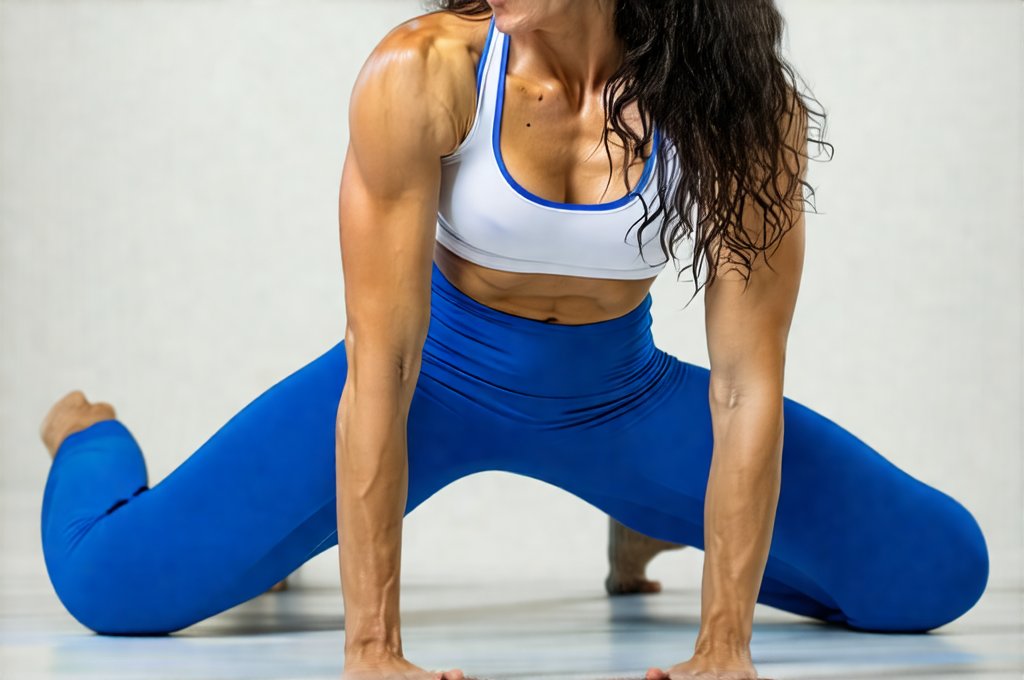The modern lifestyle – characterized by prolonged sitting, stress, and often limited movement – frequently leads to tightness in key muscle groups. Among these, the hip flexors are particularly vulnerable. They become shortened and restricted from hours spent seated at desks, driving, or even simply maintaining poor posture. This isn’t just about discomfort; tight hip flexors can contribute to lower back pain, limited range of motion, altered gait patterns, and a general feeling of being ‘stuck’ in the body. Releasing this tension is therefore crucial for improving movement quality, reducing pain, and fostering a greater sense of well-being.
Foam rolling offers an accessible and effective method for self-myofascial release (SMR), helping to address these issues without needing specialized equipment or professional intervention. An evening foam rolling routine focused on the hip flexors is especially beneficial as it allows you to unwind after the day, prepare your body for rest, and proactively address tension before it becomes chronic. Integrating this practice into your nightly routine can be a powerful tool in supporting both physical and mental flow – reducing stress hormones and promoting relaxation alongside improved musculoskeletal health. Understanding how daily routines impact overall well-being is key to holistic self-care.
Understanding Hip Flexor Tension & Its Impact
Hip flexors aren’t a single muscle; they’re a group of muscles responsible for bringing the thigh towards the torso. The primary culprits often implicated in tightness are the iliopsoas (composed of the psoas major and iliacus) and the rectus femoris. However, other muscles like the sartorius also play a role. When these muscles become chronically tight, they pull on the lower back, contributing to anterior pelvic tilt—a common postural issue where the pelvis shifts forward. This can exacerbate lower back pain and limit movement in the hips and spine. Furthermore, restricted hip flexors can inhibit glute activation – weakening your posterior chain and impacting overall strength and stability. Recognizing weak flow patterns is also important for identifying potential issues early on.
The impact extends beyond just physical limitations. Tightness in this region can also contribute to emotional holding patterns, as the psoas muscle is deeply connected to the diaphragm and plays a role in our stress response. Releasing tension here can therefore have a surprisingly profound effect on emotional well-being, fostering a sense of grounded presence and calm. Think of it as unlocking not only your body but also your inner landscape.
The good news is that consistent self-care – like foam rolling – can significantly improve this situation. By applying pressure to these muscles, we stimulate blood flow, break up adhesions (knots or tight bands in the muscle tissue), and restore optimal length and function. This isn’t about aggressively “fixing” the problem; it’s about gently encouraging your body towards greater ease and fluidity. Exploring natural supplements can also provide additional support for overall health.
Evening Foam Rolling: A Gentle Approach to Release
An evening routine is ideal because it allows you to de-stress after a long day, promoting relaxation before sleep. The goal isn’t to exhaust yourself with intense rolling but to create a gentle release that supports recovery. Begin by finding a comfortable surface – a yoga mat or carpeted floor works well. Start with slow, controlled movements and listen carefully to your body. Avoid areas of acute pain; focus instead on areas of general tightness. Remember: discomfort is okay, pain is not.
The key is consistency. Even 5-10 minutes of focused foam rolling can make a significant difference over time. It’s far more effective to roll regularly than to attempt one long, intense session sporadically. Integrate it into your existing evening routine – perhaps while watching TV or listening to music. Make it a ritual that you look forward to, rather than a chore.
Here’s a basic sequence incorporating several key areas:
1. Iliopsoas: Position the foam roller just below the hip bone and gently roll back and forth, focusing on any tender spots.
2. Rectus Femoris: Rotate your leg slightly outward to target this muscle more effectively.
3. Quadriceps: Roll from the knee to the hip, paying attention to any areas of tension.
4. TFL (Tensor Fasciae Latae): Focus on the outer hip region, applying gentle pressure.
Refining Your Routine: Specific Techniques
To deepen your foam rolling practice and address specific needs, consider these techniques:
- Static Holds: When you encounter a tender spot (often called a trigger point), hold the roller on that area for 20-30 seconds. This allows the muscle to release gradually. Breathe deeply while holding, focusing on relaxing the surrounding tissues. Don’t force it; let the pressure naturally dissipate over time.
- Directional Rolling: Experiment with rolling in different directions. Sometimes, rolling along the length of the muscle is most effective; other times, rolling across the grain (perpendicular to the muscle fibers) provides a deeper release.
- Movement Integration: Don’t just roll statically. Incorporate gentle movement while rolling. For example, when rolling your quads, you can slightly bend and straighten your knee to increase the stretch.
These techniques allow you to customize your routine based on your individual needs and preferences. Remember that foam rolling is a process of exploration – listen to your body and adjust accordingly. Don’t be afraid to experiment with different pressures and techniques until you find what works best for you.
Beyond the Roller: Supporting Flow & Integration
Foam rolling is a fantastic tool, but it’s most effective when combined with other practices that support flow and overall well-being. Consider integrating these elements into your evening routine:
- Diaphragmatic Breathing: Deep, belly breathing helps calm the nervous system and releases tension in the diaphragm – which is closely connected to the psoas muscle. Practice 5-10 minutes of conscious breathing before or after foam rolling.
- Gentle Stretching: Follow your foam rolling session with some gentle hip flexor stretches, such as a kneeling hip flexor stretch or pigeon pose. This helps elongate the muscles and maintain the release achieved through foam rolling. Avoid pushing yourself into extreme ranges of motion – focus on comfortable stretching.
- Mindfulness & Body Scan: Take a few minutes to check in with your body after foam rolling. Notice how it feels different than before. A brief body scan can help you identify any remaining areas of tension and deepen your awareness of your physical state.
These additions transform your routine from simply addressing muscle tightness to cultivating a holistic experience that promotes both physical and mental well-being.
Troubleshooting & Considerations
Foam rolling is generally safe, but there are a few things to keep in mind:
- Avoid Rolling Directly on Bones or Joints: Focus on the soft tissues (muscles).
- Don’t Roll Over Areas of Acute Injury: If you have a recent injury, consult with a healthcare professional before starting foam rolling.
- Listen To Your Body: Discomfort is normal, but pain is not. Reduce pressure or stop if you experience sharp or intense pain.
- Hydrate: Drinking plenty of water helps keep your muscles hydrated and supports the release process.
- Be Patient: It takes time to see results. Consistency is key. Don’t get discouraged if you don’t feel a dramatic difference immediately – stick with it, and over time, you will notice improvements in your movement and overall well-being.
Ultimately, an evening foam rolling routine focused on hip flexor release isn’t just about addressing physical tension; it’s about creating space for ease, flow, and relaxation in your body and mind. It is a powerful self-care practice that can have profound benefits for your overall health and quality of life. Considering evening disconnects to further reduce stress can enhance the effectiveness of this routine.





















